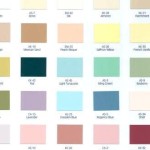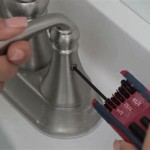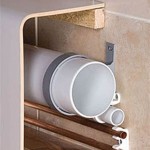Can You Use Brushed Nickel And Chrome In Bathroom Sink?
The question of whether brushed nickel and chrome finishes can coexist harmoniously in a bathroom sink area is a common one in interior design and remodeling. The definitive answer is yes, these two finishes can be used together. However, achieving a cohesive and aesthetically pleasing result requires careful consideration of several factors. Understanding the nuances of each metal finish, recognizing their individual characteristics, and employing strategic design principles are essential for a successful combination.
Brushed nickel and chrome are both popular choices for bathroom fixtures due to their durability, ease of maintenance, and ability to complement a wide range of design styles. Chrome, with its bright, reflective surface, offers a modern and clean aesthetic. In contrast, brushed nickel features a softer, warmer tone and a slightly textured surface, imparting a more subtle and understated elegance. This difference in appearance is the primary consideration when contemplating their integration.
The key to successfully mixing these finishes lies in achieving a balanced and intentional look, rather than a haphazard or unintentional clash. A well-planned approach ensures that the combination of brushed nickel and chrome enhances the overall design of the bathroom rather than detracting from it. Several key points warrant careful consideration when incorporating both finishes in a bathroom sink area.
Understanding the Key Differences Between Brushed Nickel and Chrome
Before embarking on a bathroom design project involving both brushed nickel and chrome, it is crucial to thoroughly understand the distinguishing characteristics of each finish. This understanding forms the foundation for making informed decisions and ensuring a cohesive design. The primary differences lie in their appearance, light reflectivity, and the overall ambiance they create.
Chrome is known for its high reflectivity and mirror-like shine. Its surface is smooth and highly polished, creating a bright and clean appearance. Chrome fixtures tend to reflect more light, making them ideal for smaller bathrooms or areas where maximizing brightness is desired. This reflectivity can also make chrome more susceptible to showing fingerprints and water spots, requiring more frequent cleaning to maintain its pristine appearance.
Brushed nickel, on the other hand, possesses a softer, more muted sheen. The brushing process creates a subtle texture on the surface, diffusing light and reducing its reflective properties. This results in a warmer, more subtle appearance compared to chrome. Brushed nickel is often favored for its ability to conceal fingerprints and water spots, making it a practical choice for high-use areas. Its warmer tone can also contribute to a more inviting and comfortable atmosphere in the bathroom.
The choice between brushed nickel and chrome, or their combination, should be based on the desired aesthetic, the size and lighting of the bathroom, and the maintenance preferences of the homeowner. Weighing these factors carefully will help in making informed decisions that contribute to a cohesive and functional bathroom design.
Strategies for Harmonious Integration of Brushed Nickel and Chrome
Successfully integrating brushed nickel and chrome requires a strategic approach that considers the placement and proportions of each finish. The goal is to create a balanced and intentional look that enhances the overall design of the bathroom. Several strategies can be employed to achieve this harmony. These strategies involve paying attention to the visual weight of each finish and creating a sense of continuity throughout the space.
One effective strategy is to establish a dominant finish. Choose either brushed nickel or chrome as the predominant metal finish and use the other sparingly as an accent. For instance, if the faucet and cabinet hardware are brushed nickel, consider using chrome for the towel bar or light fixtures. This approach helps to create a sense of visual cohesion and prevents the bathroom from feeling disjointed.
Another approach is to group similar finishes together. For example, all the fixtures around the sink, such as the faucet, drain, and soap dispenser, could be in one finish, while other elements in the bathroom, such as the shower fixtures or light fixtures, could be in the other finish. This grouping helps to establish a visual order and prevents the finishes from appearing randomly placed.
Consider the overall design style of the bathroom. Chrome tends to complement modern and contemporary designs with its clean lines and reflective surface. Brushed nickel, with its warmer tone and subtle texture, often works well in traditional or transitional designs. Selecting finishes that align with the overall aesthetic will help to create a cohesive and harmonious space.
Pay attention to the proportions of each finish. Avoid using too much of one finish in a small area, as this can create an imbalance. Distribute the finishes evenly throughout the bathroom to create a sense of visual harmony. This might involve using brushed nickel for the larger fixtures, such as the showerhead, and chrome for the smaller accents, such as the cabinet pulls.
Practical Considerations for Mixing Metal Finishes in a Bathroom
Beyond aesthetic considerations, practical aspects also play a crucial role in determining the success of mixing brushed nickel and chrome in a bathroom. These considerations include lighting, maintenance, and the impact of other materials in the space. Addressing these factors ensures that the combination of finishes is not only visually appealing but also functional and easy to maintain.
Lighting significantly impacts the appearance of both brushed nickel and chrome. Chrome's reflective surface will amplify the light, potentially creating glare in brightly lit bathrooms. Brushed nickel, with its diffused reflectivity, provides a softer and more even illumination. Consider the existing lighting conditions and choose finishes that complement the lighting design. If the bathroom lacks natural light, chrome fixtures can help to brighten the space. Conversely, if the bathroom receives ample natural light, brushed nickel may be a more suitable choice to avoid excessive glare.
Maintenance requirements should also be taken into account. Chrome, while visually striking, requires regular cleaning to maintain its shine and prevent water spots. Brushed nickel is more forgiving and tends to conceal fingerprints and water spots more effectively. Consider the amount of time and effort you are willing to dedicate to cleaning and choose finishes accordingly. If ease of maintenance is a priority, brushed nickel may be the preferred option, especially for high-use areas like the sink.
The other materials in the bathroom, such as the tile, countertops, and paint color, can also influence the success of mixing brushed nickel and chrome. Neutral colors, such as white, gray, and beige, tend to work well with both finishes, providing a blank canvas that allows the metal finishes to stand out. Warmer colors, such as creams and yellows, may complement brushed nickel more effectively, while cooler colors, such as blues and greens, may pair better with chrome.
When selecting the tile and countertop materials, consider the undertones of the metal finishes. Chrome has a cooler undertone, while brushed nickel has a warmer undertone. Choose materials that complement these undertones to create a cohesive and harmonious look. For example, a cool-toned gray tile might pair well with chrome fixtures, while a warm-toned beige tile might be a better choice for brushed nickel fixtures.
Ultimately, the decision to mix brushed nickel and chrome in a bathroom sink area is a matter of personal preference and design sensibility. By understanding the key differences between the finishes, employing strategic integration techniques, and considering practical factors such as lighting and maintenance, one can achieve a balanced and aesthetically pleasing result. The combination can add depth and visual interest to the bathroom, creating a space that is both functional and stylish.

Mixing Metal Finishes In The Bathroom Centsational Style

Design Tips For Mixing Metals In Bathroom Stefana Silber

Brushed Nickel And Chrome Which Is The Better Bathroom Faucet

A Simple Guide To Mixing Metals In The Bathroom 2024 Jane At Home

Brushed Nickel And Chrome Which Is The Better Bathroom Faucet

Brushed Nickel Vs Chrome Comparison Guide To Learn The Difference
Brushed Nickel Vs Chrome Learn The Difference Choose Right Faucet Finish

Mixing Metal Finishes In The Bathroom Centsational Style

Knowing Brushed Nickel Faucet Vs Chrome Differences And Similarities Arad Branding

Chrome Vs Brushed Nickel A Comparison
Related Posts







